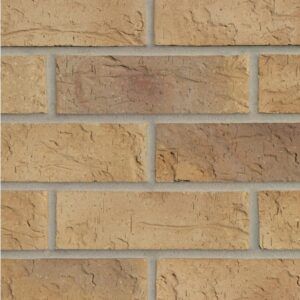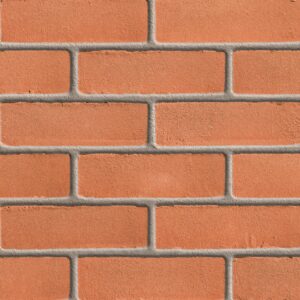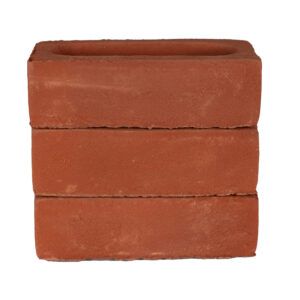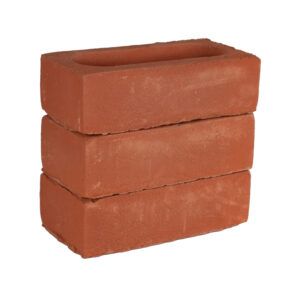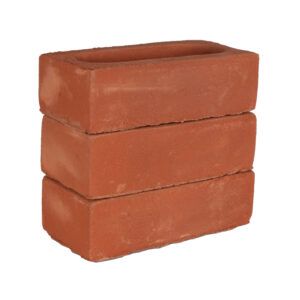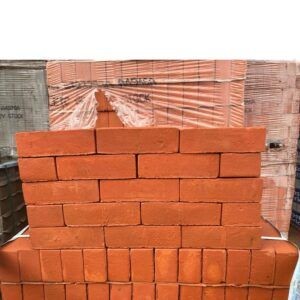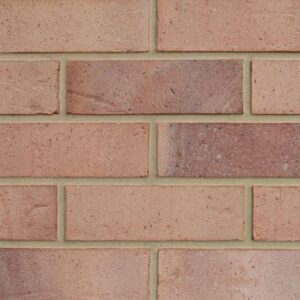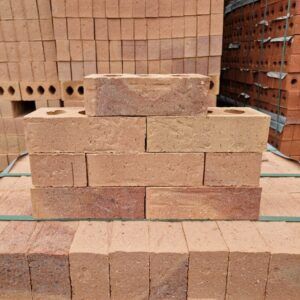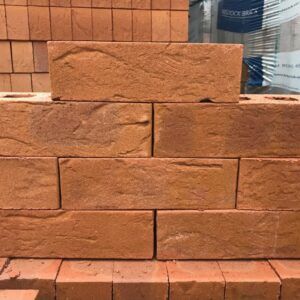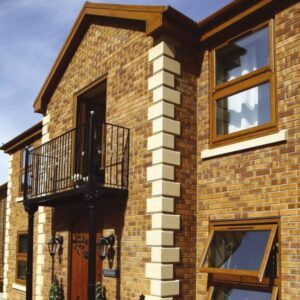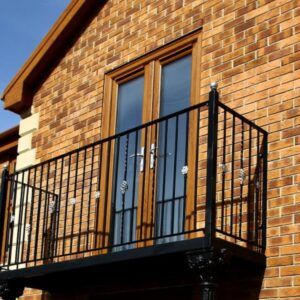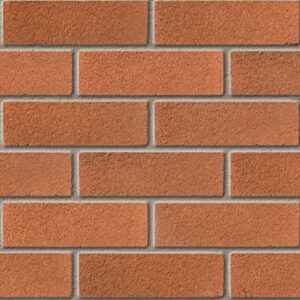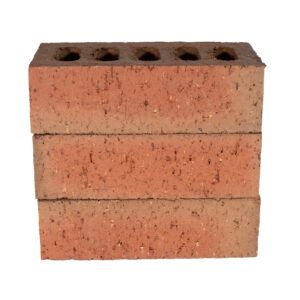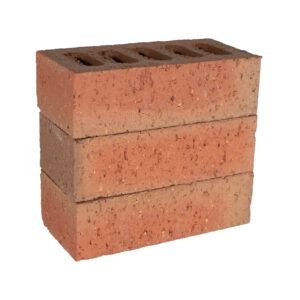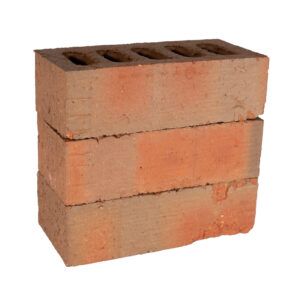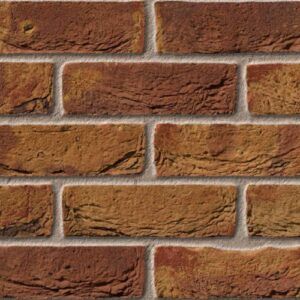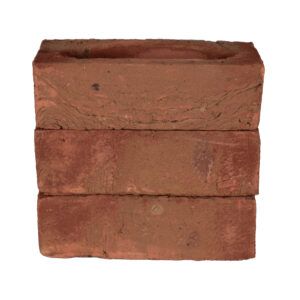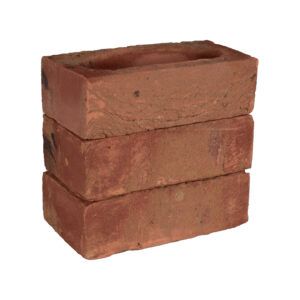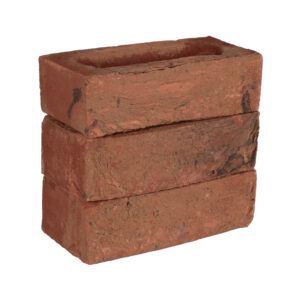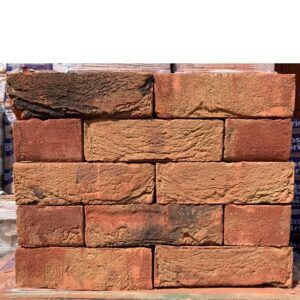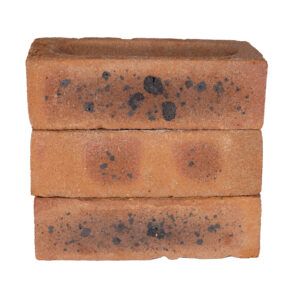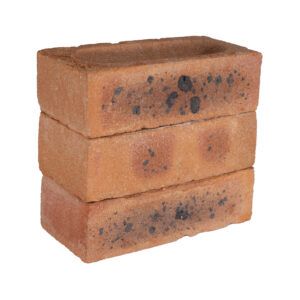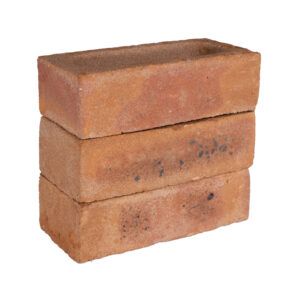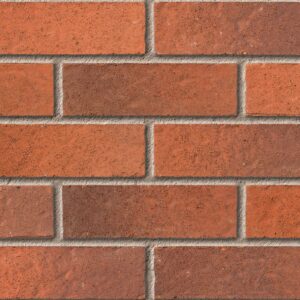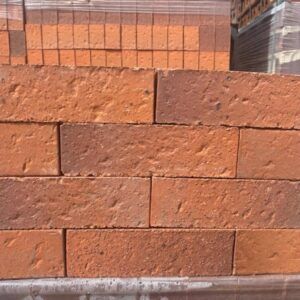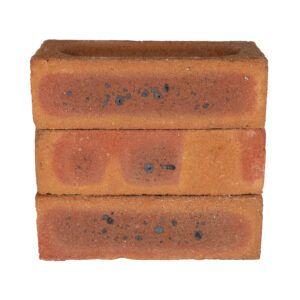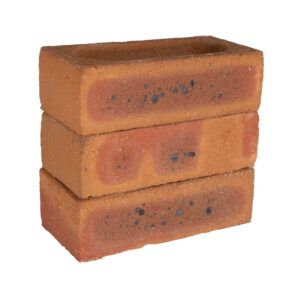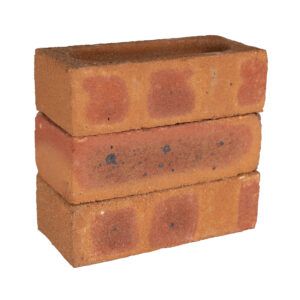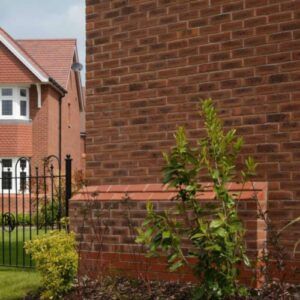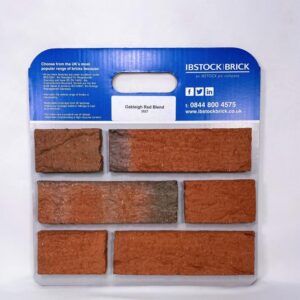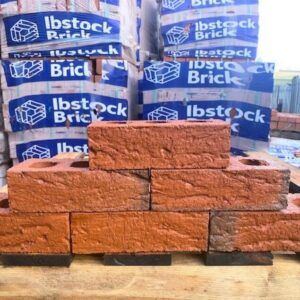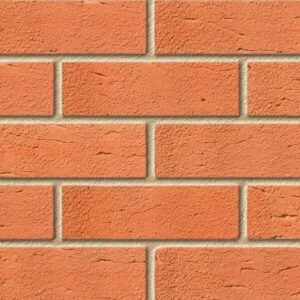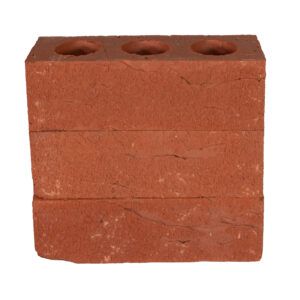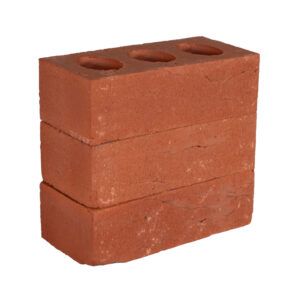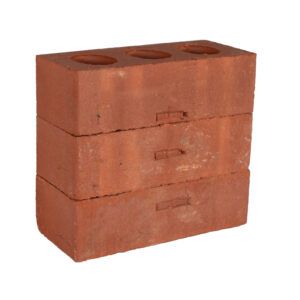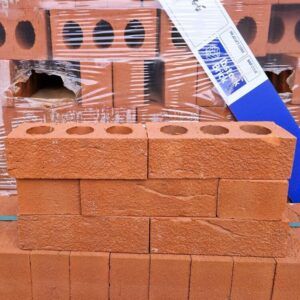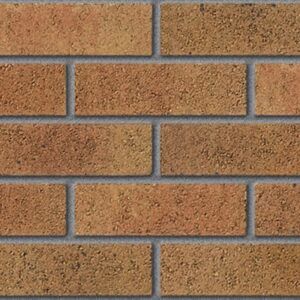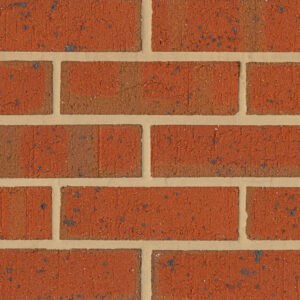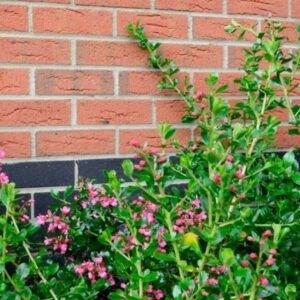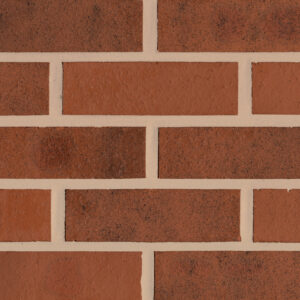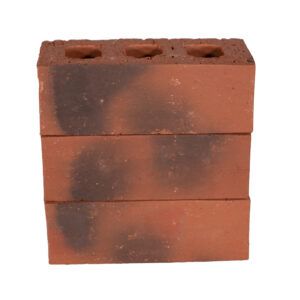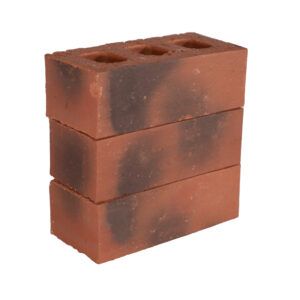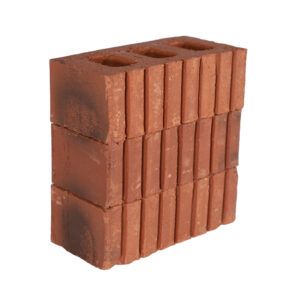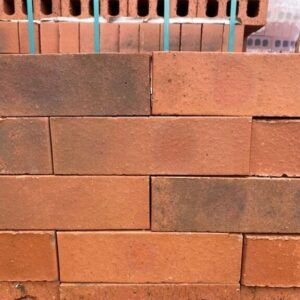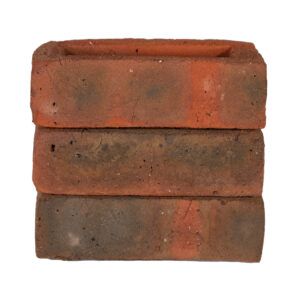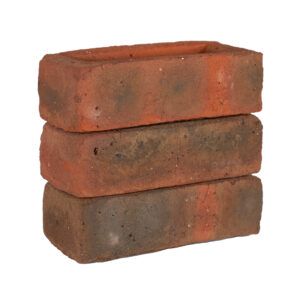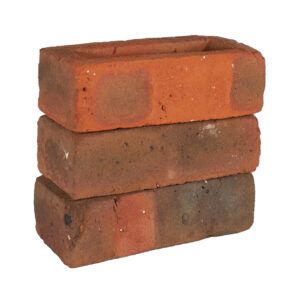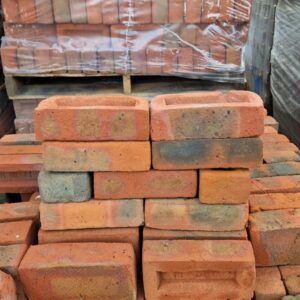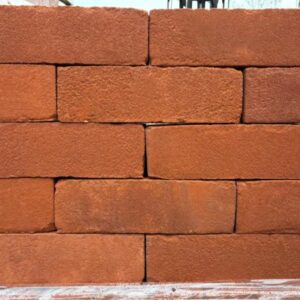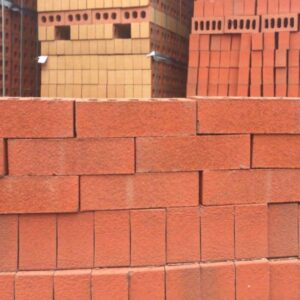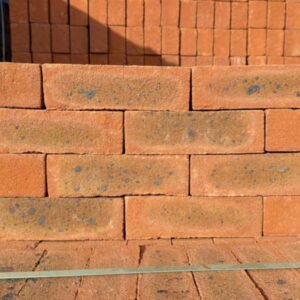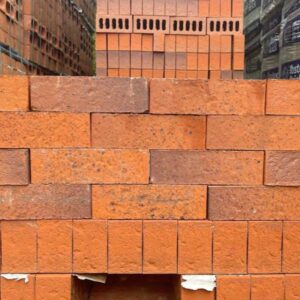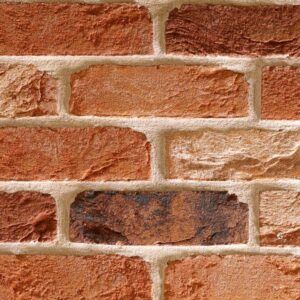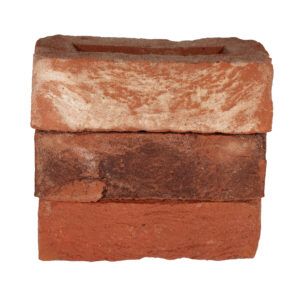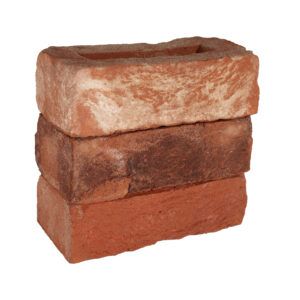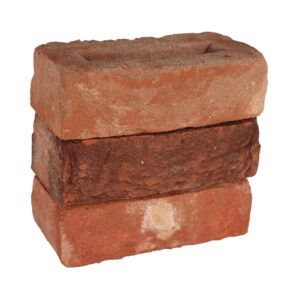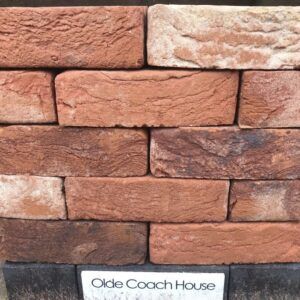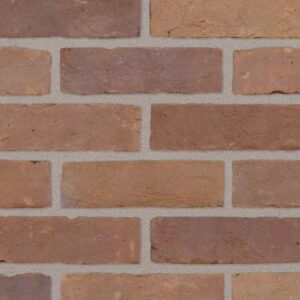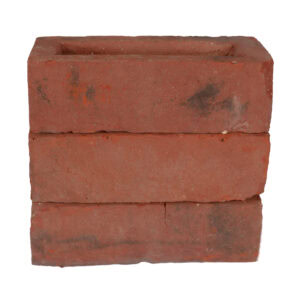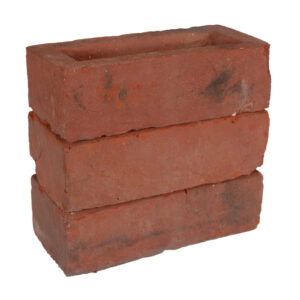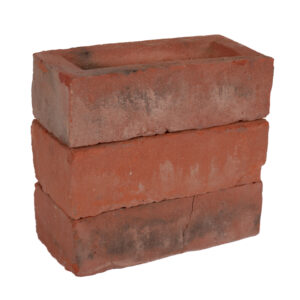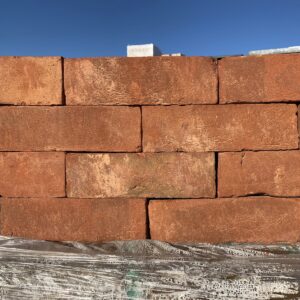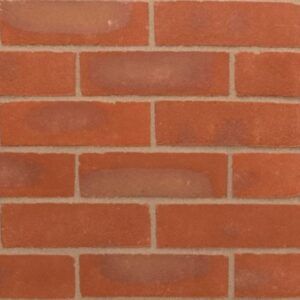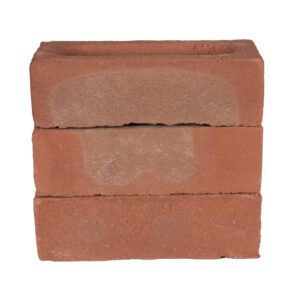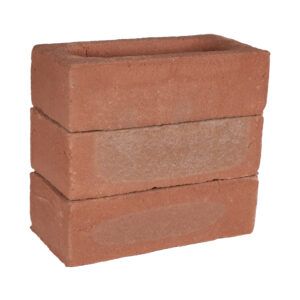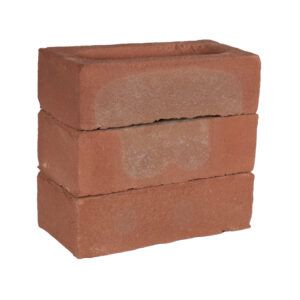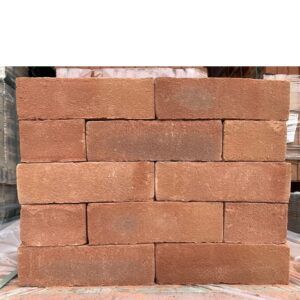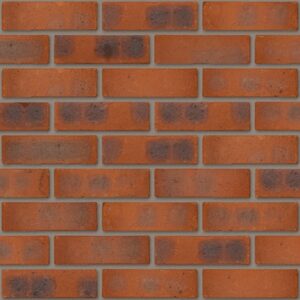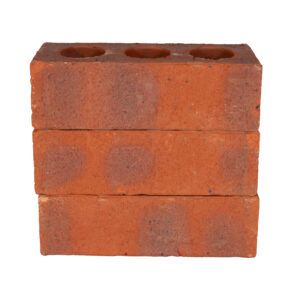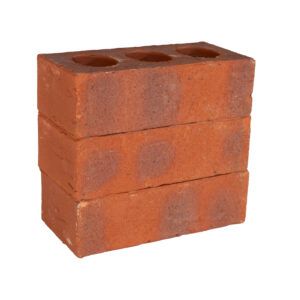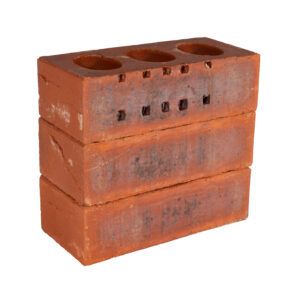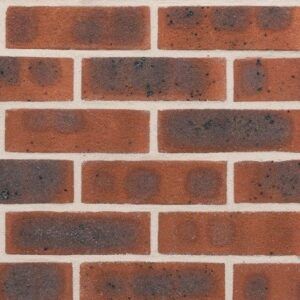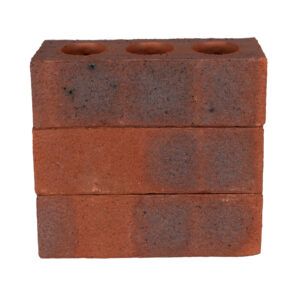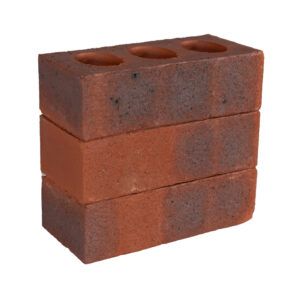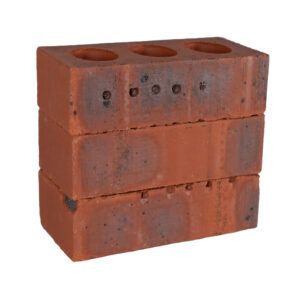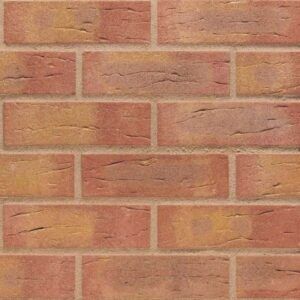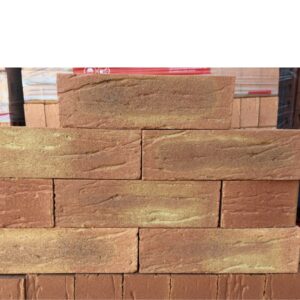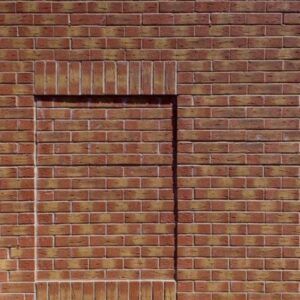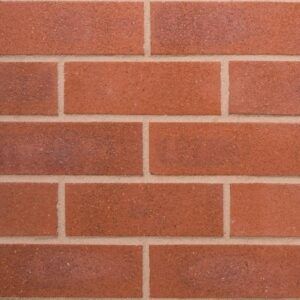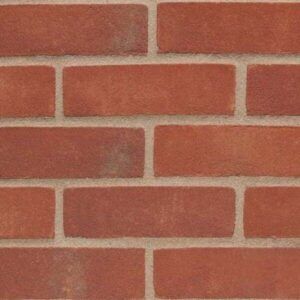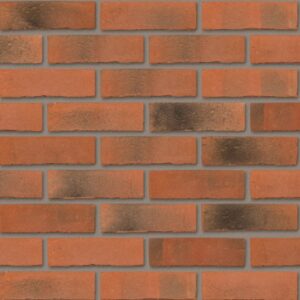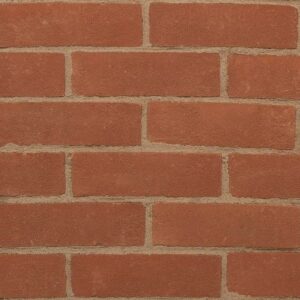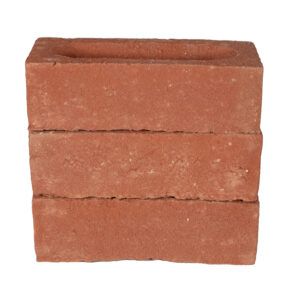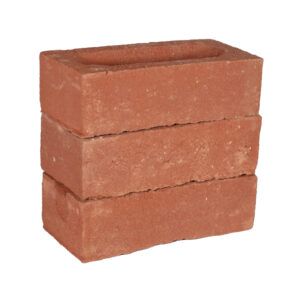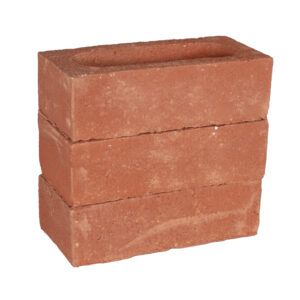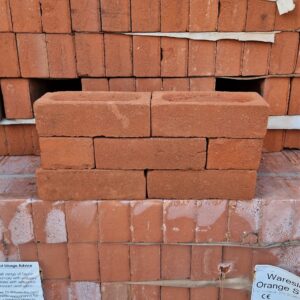Orange Bricks
Orange bricks, owing to their vivid colour, are naturally welcoming, warm, and full of character. They are a go-to option for UK contractors and architects. At Brick Wholesale, we offer a range of orange facing bricks that are perfect for adding depth and vibrancy to any build.
You can choose from options that include a variety of finishes, all with the necessary documentation, and ready to ship quickly to any site in the UK.
Key Feature of Orange Bricks
Orange bricks are made from natural clay, commonly extruded, wirecut, or soft-mud moulded. Their looks range from deep warm reds with orange undertones to a golden terracotta. Most are built to UK standards, measuring (215 × 102.5 × 65 mm) and meet BS EN 771-1 criteria, including frost resistance, suitable for Britain’s temperate weather.
The textures include smooth and waterstruck, which give builders options that work well in a wide range of projects, from the clean lines of a contemporary build to textured, heritage-style projects.
Benefits of Orange Bricks
Vibrant Aesthetic
Orange bricks warm a facade, but also imbue it with a sense of energy. It is a common design around Lincolnshire and the surrounding regions. They brighten properties that adopt either contemporary or rural/heritage designs.
Durable and Low Maintenance
As face bricks, they are built to withstand the elements while retaining their vibrancy, with minimal upkeep. Clay’s inherent strength ensures that the bricks will stand up to rain, frost, and time in the UK weather.
Thermal and Acoustic Performance
Orange clay bricks have effective thermal mass that keeps indoor temperatures stable. Additionally, they can dampen sound and regulate humidity through their density.
Heritage Character and Texture Flexibility
Handmade styles, such as TBS Old Coach House stock facing bricks, add depth and rustic charm with their creased texture. It works well in aged, heritage facades.
Eco-conscious
Orange bricks are made of natural clay, an abundant, non-toxic, recyclable material, which aligns with sustainability initiatives.
What are Orange Bricks Used For?
Beyond the colour, orange brick has a wide range of uses that include:
- Home facades and extensions in traditional and modern builds.
- Interior element features, such as fireplaces and accent walls.
- Low garden walls or planters. The rustic tones complement the landscaping elegantly.
- Public-facing structures in neighbourhoods, boutique pubs, or locations looking to sprinkle on some charm.
For high-load or heavy-duty uses, specify high-strength bricks that match the project’s requirements.
Why Choose Our Orange Building Bricks
We stock authentic orange bricks from well known UK brands like Ibstock, Classic Brick Co., Wienerberger, and The Bespoke Brick Co., to provide you with a wider range of hues, textures, and finishes.
All options come with clear technical specs, competitive bulk pricing, and fast nationwide delivery. Consult any of our brick experts who are on call to ensure you get the right product for your project.
Add the vibrancy and traditional look of orange to your builds with durable clay bricks from top UK and EU manufacturers. Order today for fast delivery or request a sample to match shades on site.
FAQs
What colour is orange brick?
Orange brick refers to the terracotta or warm amber tones seen in clay bricks. The natural clay’s iron oxide content colour is primarily responsible for this iconic colouration, which turns orange when fired. The exact hues vary depending on the clay’s source and firing conditions.
Why do orange bricks turn orange?
The iron oxide in clay turns orange once the brick is fired. It can range from soft orange to bright, saturated red.
What goes with orange bricks?
Some of the classic pairings that strike the eye well include cream, beige, and light grey. You can also take a bolder route with blue, green, or charcoal grey hues. There is a lot of wiggle room with orange bricks.
What are orange bricks made of?
Orange bricks are the product of natural clay, which is fired in kilns, causing iron oxide to react and turn into various shades of orange.
Are bricks orange or red?
Both. The final colour comes down to the region the clay is sourced from and the firing technique. Higher iron oxide content means deeper hues that cover the red spectrum, while a lower content gives you an orange hue.
Showing 1–32 of 36 results
-
Forterra Leicestershire Russet Mixture Wirecut Facing Brick Pack of 495
The Leicestershire Russet Mixture brick, manufactured by Forterra, is a perforated, wirecut facing brick that is buff / yellow / multi in colour with a light texture.
£403.04£483.65 Ex VATInc VAT£0.81£0.97 Per Brick Add to cart -
Ibstock Leicester Orange Stock Facing Brick Pack of 500
The Leicester Orange Stock brick, manufactured by Ibstock, is a stock, frogged brick that is orange in colour with a light texture.
Original price was: £499.98 Ex VAT (£599.98 Inc VAT).£428.28£513.94Current price is: £428.28 Ex VAT (£513.94 Inc VAT). Ex VATInc VAT£1.00£1.20£0.86£1.03 Per Brick Add to cart -
Buy in Bulk & Save
1-4 5-9 10+ £563.31£675.97 £549.23£659.08 £535.14£642.17 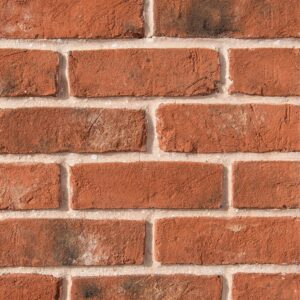 There are 2 more images
There are 2 more imagesClassic Brick Co Weathered Orange Handmade Facing Brick Pack of 450
The Weathered Orange brick, from Classic Brick Co, is a handmade, frogged facing brick that is orange / multi in colour with a heavy texture.
£563.31£675.97 Ex VATInc VAT£1.25£1.50 Per Brick Add to cart -
Forterra Cheshire Red Multi Wirecut Facing Brick Pack of 500
The Cheshire Red Multi brick, manufactured by Forterra, is a perforated, wirecut facing brick that is red / multi in colour with a light texture.
£517.19£620.63 Ex VATInc VAT£1.03£1.24 Per Brick Add to cart -
Forterra Village Honey Gold Wirecut Facing Brick Pack of 495
The Village Honey Gold brick, manufactured by Forterra, is a perforated, wirecut facing brick that is buff / orange / multi in colour with a light texture.
£402.08£482.50 Ex VATInc VAT£0.81£0.97 Per Brick Add to cart -
Ibstock Alderley Orange Wirecut Facing Brick Pack of 500
The Alderley Orange brick, manufactured by Ibstock, is a perforated, wirecut facing brick that is orange in colour with a light texture.
£436.19£523.43 Ex VATInc VAT£0.87£1.04 Per Brick Add to cart -
Buy in Bulk & Save
1-4 5-9 10+ £465.27£558.32 £453.64£544.37 £442.01£530.41 There are 1 more imagesIbstock Etruria Mixture Wirecut Facing Brick Pack of 500
The Etruria Mixture brick, manufactured by Ibstock, is a perforated, wirecut facing brick that is red / orange / multi in colour with a light texture.
£465.27£558.32 Ex VATInc VAT£0.93£1.12 Per Brick Add to cart -
Buy in Bulk & Save
1-4 5-9 10+ £418.01£501.61 £407.56£489.07 £397.11£476.53 There are 2 more imagesIbstock Ivanhoe Katrina Multi Stock Facing Brick Pack of 430
The Ivanhoe Katrina Multi brick, manufactured by Ibstock, is a stock, frogged facing brick that is red / orange / multi in colour with a heavy texture.
£418.01£501.61 Ex VATInc VAT£0.97£1.16 Per Brick Add to cart -
Buy in Bulk & Save
1-4 5-9 10+ £416.17£499.40 £405.77£486.92 £395.36£474.43 There are 1 more imagesIbstock Marlborough Stock Facing Brick Pack of 500
The Marlborough Stock brick, manufactured by Ibstock, is a stock, frogged facing brick that is red / multi in colour with a light texture.
£416.17£499.40 Ex VATInc VAT£0.83£1.00 Per Brick Add to cart -
Ibstock Mercia Orange Multi Wirecut Facing Brick Pack of 500
The Mercia Orange Multi brick, manufactured by Ibstock, is a wirecut, perforated facing brick that is red / multi in colour with a light texture.
£418.55£502.26 Ex VATInc VAT£0.84£1.01 Per Brick Add to cart -
Ibstock New Sandhurst Stock Facing Brick Pack of 500
The New Sandhurst Stock brick, manufactured by Ibstock, is a stock, frogged facing brick that is red / multi in colour with a light texture.
Original price was: £586.25 Ex VAT (£703.50 Inc VAT).£469.00£562.80Current price is: £469.00 Ex VAT (£562.80 Inc VAT). Ex VATInc VAT£1.17£1.40£0.94£1.13 Per Brick Add to cart -
Ibstock Oakleigh Red Blend Wirecut Facing Brick Pack of 500
The Oakleigh Red Blend brick, manufactured by Ibstock, is a wirecut, perforated facing brick that is red / orange / multi in colour with a heavy texture.
£525.71£630.85 Ex VATInc VAT£1.05£1.26 Per Brick Add to cart -
Buy in Bulk & Save
1-4 5-9 10+ £418.14£501.77 £407.69£489.23 £397.23£476.68 There are 2 more imagesIbstock Surrey Orange Wirecut Facing Brick Pack of 500
The Surrey Orange brick, manufactured by Ibstock, is a perforated, wirecut facing brick that is red / orange in colour with a light texture.
£418.14£501.77 Ex VATInc VAT£0.84£1.01 Per Brick Add to cart -
Marshalls Naunton Dawn Perforated Concrete Facing Brick Pack of 416
The Naunton Dawn, manufactured by Marshalls, is a concrete perforated, facing brick that is red / orange in colour with a light texture.
£305.08£366.10 Ex VATInc VAT£0.73£0.88 Per Brick Add to cart -
MBH PLC Blockleys Wrekin Berkshire Wirecut Facing Brick Pack of 400
The Blockleys Wrekin Berkshire Wirecut brick, manufactured by Michelmersh, is a perforated, wirecut facing brick that is red / multi in colour with a light texture.
£405.71£486.85 Ex VATInc VAT£1.01£1.21 Per Brick Add to cart -
Buy in Bulk & Save
1-4 5-9 10+ £510.38£612.46 £497.62£597.14 £484.86£581.83 There are 2 more imagesMBH PLC Carlton Clayburn Civic 65mm Wirecut Facing Brick Pack of 504
The Carlton Clayburn Civic brick, manufactured by Michelmersh, is a perforated, wirecut facing brick that is red / multi in colour with a smooth texture.
£510.38£612.46 Ex VATInc VAT£1.01£1.21 Per Brick Add to cart -
Buy in Bulk & Save
1-4 5-9 10+ £603.31£723.97 £588.23£705.88 £573.14£687.77 There are 2 more imagesMBH PLC Hampshire Stock Red Multi ATR Stock Facing Brick Pack of 495
The Hampshire Stock Red Multi ATR brick, manufactured by Michelmersh, is a stock facing brick that is red / multi in colour with a light texture.
£603.31£723.97 Ex VATInc VAT£1.22£1.46 Per Brick Add to cart -
Stock Clearance Forterra Medway Orange Stock Facing Brick Pack of 495
The Medway Orange brick, manufactured by Forterra, is a stock, frogged facing brick that is orange in colour with a light texture.
£381.40£457.68 Ex VATInc VAT£0.77£0.92 Per Brick Add to cart -
Stock Clearance Ibstock Alderley Orange Wirecut Facing Brick Pack of 500
The Alderley Orange brick, manufactured by Ibstock, is a perforated, wirecut facing brick that is orange / multi in colour with a light texture.
£232.36£278.83 Ex VATInc VAT£0.46£0.55 Per Brick Add to cart -
Stock Clearance Ibstock Lambourne Orange Stock Facing Brick Pack of 500
The Lambourne Orange brick, manufactured by Ibstock, is a stock, frogged facing brick that is orange / multi in colour with a light texture.
£334.33£401.20 Ex VATInc VAT£0.67£0.80 Per Brick Add to cart -
Stock Clearance Ibstock Mercia Orange Multi Wirecut Facing Brick Pack of 500
The Mercia Orange Multi brick, manufactured by Ibstock, is a perforated, wirecut facing brick that is red / orange / multi in colour with a light texture.
£301.50£361.80 Ex VATInc VAT£0.60£0.72 Per Brick Add to cart -
Stock Clearance Ibstock Surrey Orange Wirecut Facing Brick Pack of 500
The Surrey Orange brick, manufactured by Ibstock, is a perforated, wirecut facing brick that is orange in colour with a light texture.
Original price was: £351.75 Ex VAT (£422.10 Inc VAT).£338.35£406.02Current price is: £338.35 Ex VAT (£406.02 Inc VAT). Ex VATInc VAT£0.70£0.84£0.68£0.82 Per Brick Add to cart -
Buy in Bulk & Save
1-4 5-9 10+ £836.95£1,004.34 £816.03£979.24 £795.10£954.12 There are 2 more imagesTBS Old Coach House Stock Facing Brick Pack of 730
The Old Coach House brick, manufactured by Traditional Brick & Stone, is a stock, frogged facing brick that is orange / red / multi in colour with a heavy texture.
£836.95£1,004.34 Ex VATInc VAT£1.15£1.38 Per Brick Add to cart -
The Bespoke Brick Co Perton Orange Imperial 68mm Handmade Facing Brick Pack of 514
The Perton Orange Imperial 68mm brick, manufactured by The Bespoke Brick Co, is a handmade, frogged facing brick that is orange / multi in colour with a light texture.
£547.04£656.45 Ex VATInc VAT£1.06£1.27 Per Brick Add to cart -
Wienerberger Dewhurst Orange Multi Stock Facing Brick Pack of 500
The Dewhurst Orange Multi brick, manufactured by Wienerberger, is a stock, frogged facing brick that is orange / multi in colour with a light texture.
£457.79£549.35 Ex VATInc VAT£0.92£1.10 Per Brick Add to cart -
Wienerberger Dunsfold Multi Wirecut Facing Brick Pack of 400
The Dunsfold Multi brick, manufactured by Wienerberger, is a perforated, wirecut facing brick that is red / orange / multi in colour with a light texture.
£286.40£343.68 Ex VATInc VAT£0.72£0.86 Per Brick Add to cart -
Wienerberger Kingsley Multi Wirecut Facing Brick Pack of 400
The Kingsley Multi brick, manufactured by Wienerberger, is a perforated, wirecut facing brick that is orange / multi in colour with a light texture.
£286.75£344.10 Ex VATInc VAT£0.72£0.86 Per Brick Add to cart -
Wienerberger Maple Red Multi Wirecut Facing Brick Pack of 500
The Maple Red Multi brick, manufactured by Wienerberger, is a perforated, wirecut facing brick that is red / multi in colour with a light texture.
£532.56£639.07 Ex VATInc VAT£1.07£1.28 Per Brick Add to cart -
Wienerberger Mulcol 73mm Wirecut Facing Brick Pack of 385
The Mulcol 73mm brick, manufactured by Wienerberger, is a perforated, wirecut facing brick that is red in colour with a light texture.
£395.85£475.02 Ex VATInc VAT£1.03£1.24 Per Brick Add to cart -
Wienerberger Orange Multi Gilt Stock Facing Brick Pack of 500
The Orange Multi Gilt Stock brick, manufactured by Wienerberger, is a stock, frogged facing brick that is red / orange in colour with a light texture.
£437.09£524.51 Ex VATInc VAT£0.87£1.04 Per Brick Add to cart -
Buy in Bulk & Save
1-4 5-9 10+ £460.61£552.73 £449.09£538.91 £437.58£525.10 There are 1 more imagesWienerberger Smoked Orange Multi Gilt Stock Facing Brick Pack of 500
The Smoked Orange Multi Gilt brick, manufactured by Wienerberger, is a stock, frogged facing brick that is orange / multi in colour with a light texture.
£460.61£552.73 Ex VATInc VAT£0.92£1.10 Per Brick Add to cart -
Wienerberger Waresley Orange Stock Facing Brick Pack of 500
The Waresley Orange Stock brick, manufactured by Wienerberger, is a stock, frogged facing brick that is red / orange in colour with a light texture.
£439.95£527.94 Ex VATInc VAT£0.88£1.06 Per Brick Add to cart
